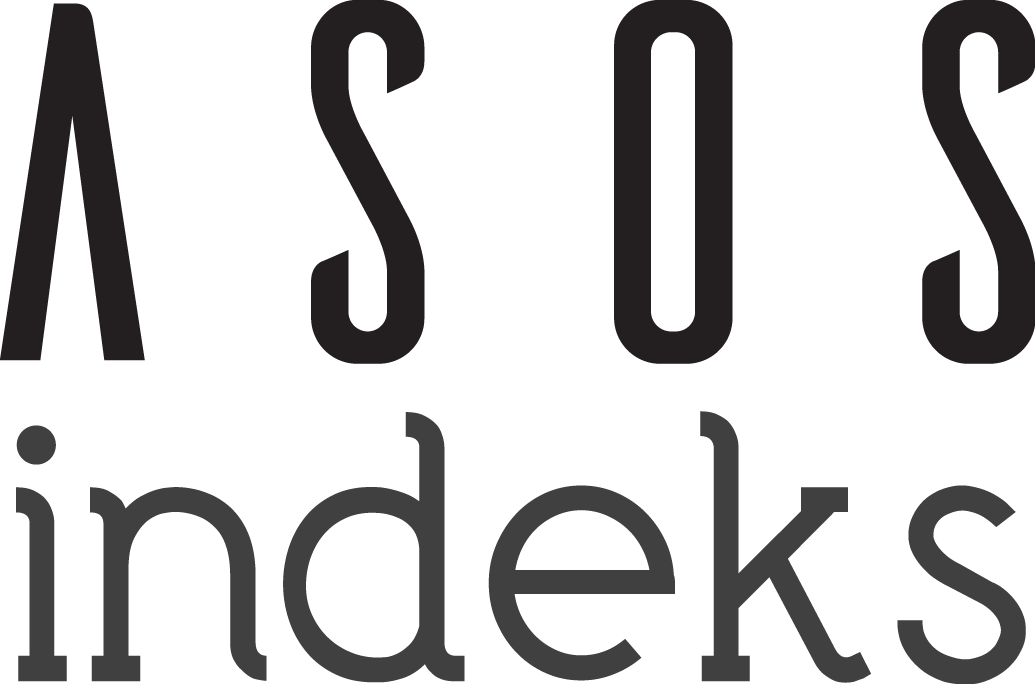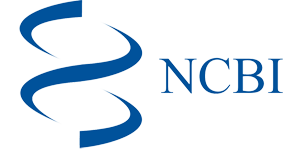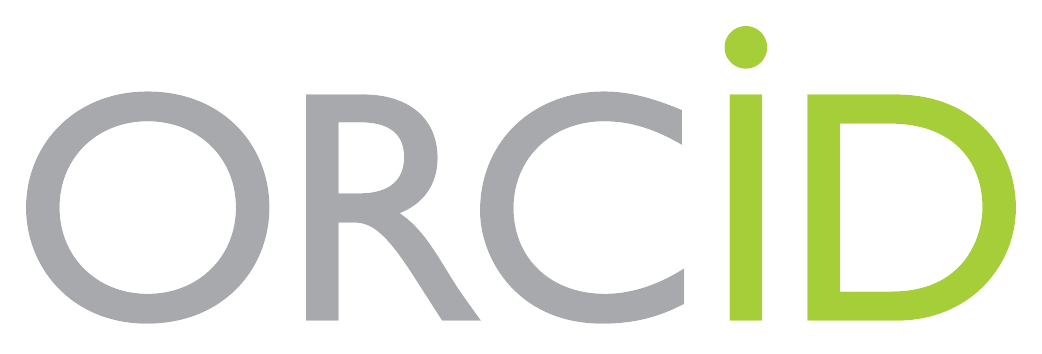Hiperbarik oksijen tedavisi, yüksek fruktozlu diyetin neden olduğu koklear hasarı hafifletir: sıçanlarda histopatolojik bir çalışma
Abstract
Aims: Hearing loss, an increasing worldwide issue, has been associated with increased carbohydrate consumption. This study investigates the histopathological impact of a high-fructose diet (HFD) on cochlear structures and assesses whether hyperbaric oxygen therapy (HBOT) can mitigate those effects.
Methods: Adult male Wistar rats were divided into four groups (n=8 each): control (standard diet, 10 weeks), HFD (60% fructose diet, 10 weeks), HBOT (standard diet+daily HBOT at 2.4 ATA for 1 h during weeks 9–10), and HFD+HBOT (60% fructose diet+HBOT in weeks 9–10). After 10 weeks, cochleae were took out and stria vascularis thickness, basilar membrane thickness, and inner/outer hair cell lengths were measured in basal, middle, and apical turns. Cochlear cross-sections stained with H&E and Masson’s trichrome, and evaluated histopathologically under light microscope.
Results: Compared to controls, HFD-fed rats had thinner stria vascularis and basilar membranes in basal and intermediate turns and shorter hair cell lengths throughout all turns. The apical turn outer hair cell length and the middle and apical turns inner hair cell length increased statistically in HFD+HBOT rats compared to HFD alone. No significant changes were seen between HBOT-only and control groups. HFD induces considerable cochlear damage and cellular death in the organ of Corti in subjects. HBOT application somewhat mitigates these effects.
Conclusion: A 10-week HFD induces region-specific cochlear structural degeneration in rats, and HBOT during the final two weeks partially reverses these changes. Future studies with larger sample sizes should include functional auditory assessments and explore underlying molecular mechanisms.
Project Number
None
References
- World Health Organization. Deafness and hearing loss. World Health Organization. Published 2025. Accessed June 1, 2025. https://www.who.int/news-room/fact-sheets/detail/deafness-and- hearing-loss
- Puga AM, Pajares MA, Varela-Moreiras G, Partearroyo T. Interplay between nutrition and hearing loss: state of art. Nutrients. 2018;11(1):35. doi:10.3390/nu11010035
- Gopinath B, Flood VM, McMahon CM, Burlutsky G, Brand-Miller J, Mitchell P. Dietary glycemic load is a predictor of age-related hearing loss in older adults. J Nutr. 2010;140(12):2207-2212. doi:10.3945/jn.110. 128462
- Lee HJ, Yoo SG, Lee SJ, Han JS, Choi IY, Park KH. Association between HbA1c and hearing loss: a tertiary care center-based study. Sci Rep. 2023;13(1):18409. doi:10.1038/s41598-023- 44909-7
- Bray GA, Nielsen SJ, Popkin BM. Consumption of high-fructose corn syrup in beverages may play a role in the epidemic of obesity. Am J Clin Nutr. 2004;79(4):537-543. doi:10.1093/ajcn/79.4.537
- Rizkalla SW. Health implications of fructose consumption: a review of recent data. Nutr Metab (Lond). 2010;7:82. doi:10.1186/1743-7075-7-82
- Bernardes N, Ayyappan P, De Angelis K, et al. Excessive consumption of fructose causes cardiometabolic dysfunctions through oxidative stress and inflammation. Can J Physiol Pharmacol. 2017;95(10):1078-1090. doi: 10.1139/cjpp-2016-0663
- Cheng H, Zhou J, Sun Y, Zhan Q, Zhang D. High fructose diet: a risk factor for immune system dysregulation. Hum Immunol. 2022;83(6):538-546. doi:10.1016/j.humimm.2022.03.007
- Mazzoli A, Spagnuolo MS, Nazzaro M, et al. Fructose removal from the diet reverses inflammation, mitochondrial dysfunction, and oxidative stress in hippocampus. Antioxidants (Basel). 2021;10(3):487. doi:10. 3390/antiox10030487
- Baek JI, Kim YR, Lee KY, Kim UK. Mitochondrial redox system: a key target of antioxidant therapy to prevent acquired sensorineural hearing loss. Front Pharmacol. 2023;14:1176881. doi:10.3389/fphar.2023.1176881
- Su Z, Chen Y, Liu Y, et al. Oxidative stress and inflammation combine to exacerbate cochlear damage and sensorineural hearing loss in C57BL/6 mice. Front Neurosci. 2025;19:1563428. doi:10.3389/fnins.2025.1563428
- Baumann A, Brandt A, Bergheim I. Fructose, a trigger of metabolic diseases? A narrative review. Explor Dig Dis. 2022;1(1):51-71. doi:10.37349/edd.2022.00005
- Jin J, Liu J, Luo Y, et al. High fructose induces dysfunctional vasodilatation via PP2A-mediated eNOS Ser1177 dephosphorylation. Nutr Metab (Lond). 2022;19(1):24. doi:10.1186/s12986- 022-00659-3
- Brechtelsbauer PB, Nuttall AL, Miller JM. Basal nitric oxide production in regulation of cochlear blood flow. Hear Res. 1994;77(1-2):38-42. doi: 10.1016/0378-5955(94)90251-8
- Choi Y, Han SJ, Kim SK, Hong SM. The therapeutic effect of hyperbaric oxygen therapy in patients with severe to profound idiopathic sudden sensorineural hearing loss. Sci Rep. 2024;14(1):3321. doi:10.1038/s41598-024-53978-1
- Cavaliere M, De Luca P, Scarpa A, et al. Combination of hyperbaric oxygen therapy and oral steroids for the treatment of sudden sensorineural hearing loss: early or late? Medicina (Kaunas). 2022;58(10): 1421. doi:10.3390/medicina58101421
- Chen YC, Liu YH, Kang BH, et al. Hyperbaric oxygen therapy improves the effects of systemic steroid therapy for sudden sensorineural hearing loss. Heliyon. 2025;11:e42025. doi:10.1016/j.heliyon.2025.e42025
- Joshua TG, Ayub A, Wijesinghe P, Nunez DA. Hyperbaric oxygen therapy for patients with sudden sensorineural hearing loss: a systematic review and meta-analysis. JAMA Otolaryngol Head Neck Surg. 2022;148(1):5-11. doi:10.1001/jamaoto.2021.2685
- Arslan HH, Satar B, Serdar MA, Ozler M, Yilmaz E. Effects of hyperbaric oxygen and dexamethasone on proinflammatory cytokines of rat cochlea in noise-induced hearing loss. Otol Neurotol. 2012;33(9):1672-1678. doi:10.1097/MAO.0b013e31826bf3f6
- Lafère P, Vanhoutte D, Germonpré P. Hyperbaric oxygen therapy for acute noise-induced hearing loss: evaluation of different treatment regimens. Diving Hyperb Med. 2010;40(2):63- 67.
- Su YT, Guo YB, Cheng YP, et al. Hyperbaric oxygen treatment ameliorates hearing loss and auditory cortex injury in noise exposed mice by repressing local ceramide accumulation. Int J Mol Sci. 2019; 20(19):4675. doi:10.3390/ijms20194675
- Manji SS, Miller KA, Williams LH, Dahl HH. Identification of three novel hearing loss mouse strains with mutations in the Tmc1 gene. Am J Pathol. 2012;180(4):1560-1569. doi:10.1016/j.ajpath.2011.12.034
- Shi TF, Zhou Z, Jiang WJ, et al. Hyperglycemia-induced oxidative stress exacerbates mitochondrial apoptosis damage to cochlear stria vascularis pericytes via the ROS-mediated Bcl-2/CytC/AIF pathway. Redox Rep. 2024;29(1):2382943. doi:10.1080/13510002.2024.2382943
- Guo B, Guo Q, Wang Z, et al. D-Galactose-induced oxidative stress and mitochondrial dysfunction in the cochlear basilar membrane: an in vitro aging model. Biogerontology. 2020;21:311-323. doi:10.1007/s10522-020-09859-x
- Kurata N, Schachern PA, Paparella MM, Cureoglu S. Histopathologic evaluation of vascular findings in the cochlea in patients with presbycusis. JAMA Otolaryngol Head Neck Surg. 2016;142(2):173-178. doi:10.1001/jamaoto.2015.3163
- Psillas G. Hyperbaric oxygen therapy in the treatment of sudden sensorineural hearing loss. J Clin Med. 2023;12(4):1515. doi:10.3390/jcm 12041515
- Lin CD, Wei IH, Lai CH, et al. Hyperbaric oxygen upregulates cochlear constitutive nitric oxide synthase. BMC Neurosci. 2011;12:1-10. doi:10. 1186/1471-2202-12-21
- Huo Z, Cheng X, Gu J, et al. Prognostic factors for hearing outcomes in patients that undergo adjuvant hyperbaric oxygen therapy for sudden sensorineural hearing loss. Laryngoscope Investig Otolaryngol. 2022; 7(2):592-598. doi:10.1002/lio2.768
- Zhang Y, Jia X, Liu X, et al. Hyperbaric oxygen therapy promotes hearing gain with increases in serum IGF-1 and HSP70 in patients with idiopathic sudden sensorineural hearing loss. Evid Based Complement Alternat Med. 2022;2022:1368783. doi:10.1155/2022/1368783
- Liu XH, Liang F, Jia XY, et al. Hyperbaric oxygen treatment improves hearing level via attenuating TLR4/NF-κB mediated inflammation in sudden sensorineural hearing loss patients. Biomed Environ Sci. 2020; 33(5):331-337. doi:10.3967/bes2020.045
Hyperbaric oxygen therapy mitigates cochlear damage induced by a high-fructose diet: a histopathological study in rats
Abstract
Aims: Hearing loss, an increasing worldwide issue, has been associated with increased carbohydrate consumption. This study investigates the histopathological impact of a high-fructose diet (HFD) on cochlear structures and assesses whether hyperbaric oxygen therapy (HBOT) can mitigate those effects.
Methods: Adult male Wistar rats were divided into four groups (n=8 each): control (standard diet, 10 weeks), HFD (60% fructose diet, 10 weeks), HBOT (standard diet+daily HBOT at 2.4 ATA for 1 h during weeks 9–10), and HFD+HBOT (60% fructose diet+HBOT in weeks 9–10). After 10 weeks, cochleae were took out and stria vascularis thickness, basilar membrane thickness, and inner/outer hair cell lengths were measured in basal, middle, and apical turns. Cochlear cross-sections stained with H&E and Masson’s trichrome, and evaluated histopathologically under light microscope.
Results: Compared to controls, HFD-fed rats had thinner stria vascularis and basilar membranes in basal and intermediate turns and shorter hair cell lengths throughout all turns. The apical turn outer hair cell length and the middle and apical turns inner hair cell length increased statistically in HFD+HBOT rats compared to HFD alone. No significant changes were seen between HBOT-only and control groups. HFD induces considerable cochlear damage and cellular death in the organ of Corti in subjects. HBOT application somewhat mitigates these effects.
Conclusion: A 10-week HFD induces region-specific cochlear structural degeneration in rats, and HBOT during the final two weeks partially reverses these changes. Future studies with larger sample sizes should include functional auditory assessments and explore underlying molecular mechanisms.
Keywords
Hyperbaric oxygen therapy high-fructose diet inner hair cell organ of corti outer hair cell
Ethical Statement
All procedures involving animals were approved by the Ethics Committee of Erciyes University (ERU HADYEK) (Date: 08.01.2025, Decision No: 25/025).
Supporting Institution
None
Project Number
None
References
- World Health Organization. Deafness and hearing loss. World Health Organization. Published 2025. Accessed June 1, 2025. https://www.who.int/news-room/fact-sheets/detail/deafness-and- hearing-loss
- Puga AM, Pajares MA, Varela-Moreiras G, Partearroyo T. Interplay between nutrition and hearing loss: state of art. Nutrients. 2018;11(1):35. doi:10.3390/nu11010035
- Gopinath B, Flood VM, McMahon CM, Burlutsky G, Brand-Miller J, Mitchell P. Dietary glycemic load is a predictor of age-related hearing loss in older adults. J Nutr. 2010;140(12):2207-2212. doi:10.3945/jn.110. 128462
- Lee HJ, Yoo SG, Lee SJ, Han JS, Choi IY, Park KH. Association between HbA1c and hearing loss: a tertiary care center-based study. Sci Rep. 2023;13(1):18409. doi:10.1038/s41598-023- 44909-7
- Bray GA, Nielsen SJ, Popkin BM. Consumption of high-fructose corn syrup in beverages may play a role in the epidemic of obesity. Am J Clin Nutr. 2004;79(4):537-543. doi:10.1093/ajcn/79.4.537
- Rizkalla SW. Health implications of fructose consumption: a review of recent data. Nutr Metab (Lond). 2010;7:82. doi:10.1186/1743-7075-7-82
- Bernardes N, Ayyappan P, De Angelis K, et al. Excessive consumption of fructose causes cardiometabolic dysfunctions through oxidative stress and inflammation. Can J Physiol Pharmacol. 2017;95(10):1078-1090. doi: 10.1139/cjpp-2016-0663
- Cheng H, Zhou J, Sun Y, Zhan Q, Zhang D. High fructose diet: a risk factor for immune system dysregulation. Hum Immunol. 2022;83(6):538-546. doi:10.1016/j.humimm.2022.03.007
- Mazzoli A, Spagnuolo MS, Nazzaro M, et al. Fructose removal from the diet reverses inflammation, mitochondrial dysfunction, and oxidative stress in hippocampus. Antioxidants (Basel). 2021;10(3):487. doi:10. 3390/antiox10030487
- Baek JI, Kim YR, Lee KY, Kim UK. Mitochondrial redox system: a key target of antioxidant therapy to prevent acquired sensorineural hearing loss. Front Pharmacol. 2023;14:1176881. doi:10.3389/fphar.2023.1176881
- Su Z, Chen Y, Liu Y, et al. Oxidative stress and inflammation combine to exacerbate cochlear damage and sensorineural hearing loss in C57BL/6 mice. Front Neurosci. 2025;19:1563428. doi:10.3389/fnins.2025.1563428
- Baumann A, Brandt A, Bergheim I. Fructose, a trigger of metabolic diseases? A narrative review. Explor Dig Dis. 2022;1(1):51-71. doi:10.37349/edd.2022.00005
- Jin J, Liu J, Luo Y, et al. High fructose induces dysfunctional vasodilatation via PP2A-mediated eNOS Ser1177 dephosphorylation. Nutr Metab (Lond). 2022;19(1):24. doi:10.1186/s12986- 022-00659-3
- Brechtelsbauer PB, Nuttall AL, Miller JM. Basal nitric oxide production in regulation of cochlear blood flow. Hear Res. 1994;77(1-2):38-42. doi: 10.1016/0378-5955(94)90251-8
- Choi Y, Han SJ, Kim SK, Hong SM. The therapeutic effect of hyperbaric oxygen therapy in patients with severe to profound idiopathic sudden sensorineural hearing loss. Sci Rep. 2024;14(1):3321. doi:10.1038/s41598-024-53978-1
- Cavaliere M, De Luca P, Scarpa A, et al. Combination of hyperbaric oxygen therapy and oral steroids for the treatment of sudden sensorineural hearing loss: early or late? Medicina (Kaunas). 2022;58(10): 1421. doi:10.3390/medicina58101421
- Chen YC, Liu YH, Kang BH, et al. Hyperbaric oxygen therapy improves the effects of systemic steroid therapy for sudden sensorineural hearing loss. Heliyon. 2025;11:e42025. doi:10.1016/j.heliyon.2025.e42025
- Joshua TG, Ayub A, Wijesinghe P, Nunez DA. Hyperbaric oxygen therapy for patients with sudden sensorineural hearing loss: a systematic review and meta-analysis. JAMA Otolaryngol Head Neck Surg. 2022;148(1):5-11. doi:10.1001/jamaoto.2021.2685
- Arslan HH, Satar B, Serdar MA, Ozler M, Yilmaz E. Effects of hyperbaric oxygen and dexamethasone on proinflammatory cytokines of rat cochlea in noise-induced hearing loss. Otol Neurotol. 2012;33(9):1672-1678. doi:10.1097/MAO.0b013e31826bf3f6
- Lafère P, Vanhoutte D, Germonpré P. Hyperbaric oxygen therapy for acute noise-induced hearing loss: evaluation of different treatment regimens. Diving Hyperb Med. 2010;40(2):63- 67.
- Su YT, Guo YB, Cheng YP, et al. Hyperbaric oxygen treatment ameliorates hearing loss and auditory cortex injury in noise exposed mice by repressing local ceramide accumulation. Int J Mol Sci. 2019; 20(19):4675. doi:10.3390/ijms20194675
- Manji SS, Miller KA, Williams LH, Dahl HH. Identification of three novel hearing loss mouse strains with mutations in the Tmc1 gene. Am J Pathol. 2012;180(4):1560-1569. doi:10.1016/j.ajpath.2011.12.034
- Shi TF, Zhou Z, Jiang WJ, et al. Hyperglycemia-induced oxidative stress exacerbates mitochondrial apoptosis damage to cochlear stria vascularis pericytes via the ROS-mediated Bcl-2/CytC/AIF pathway. Redox Rep. 2024;29(1):2382943. doi:10.1080/13510002.2024.2382943
- Guo B, Guo Q, Wang Z, et al. D-Galactose-induced oxidative stress and mitochondrial dysfunction in the cochlear basilar membrane: an in vitro aging model. Biogerontology. 2020;21:311-323. doi:10.1007/s10522-020-09859-x
- Kurata N, Schachern PA, Paparella MM, Cureoglu S. Histopathologic evaluation of vascular findings in the cochlea in patients with presbycusis. JAMA Otolaryngol Head Neck Surg. 2016;142(2):173-178. doi:10.1001/jamaoto.2015.3163
- Psillas G. Hyperbaric oxygen therapy in the treatment of sudden sensorineural hearing loss. J Clin Med. 2023;12(4):1515. doi:10.3390/jcm 12041515
- Lin CD, Wei IH, Lai CH, et al. Hyperbaric oxygen upregulates cochlear constitutive nitric oxide synthase. BMC Neurosci. 2011;12:1-10. doi:10. 1186/1471-2202-12-21
- Huo Z, Cheng X, Gu J, et al. Prognostic factors for hearing outcomes in patients that undergo adjuvant hyperbaric oxygen therapy for sudden sensorineural hearing loss. Laryngoscope Investig Otolaryngol. 2022; 7(2):592-598. doi:10.1002/lio2.768
- Zhang Y, Jia X, Liu X, et al. Hyperbaric oxygen therapy promotes hearing gain with increases in serum IGF-1 and HSP70 in patients with idiopathic sudden sensorineural hearing loss. Evid Based Complement Alternat Med. 2022;2022:1368783. doi:10.1155/2022/1368783
- Liu XH, Liang F, Jia XY, et al. Hyperbaric oxygen treatment improves hearing level via attenuating TLR4/NF-κB mediated inflammation in sudden sensorineural hearing loss patients. Biomed Environ Sci. 2020; 33(5):331-337. doi:10.3967/bes2020.045
Details
| Primary Language | English |
|---|---|
| Subjects | Public Health Nutrition, Underwater and Hyperbaric Medicine |
| Journal Section | Research Articles |
| Authors | |
| Project Number | None |
| Publication Date | July 28, 2025 |
| Submission Date | June 30, 2025 |
| Acceptance Date | July 20, 2025 |
| Published in Issue | Year 2025 Volume: 7 Issue: 4 |
TR DİZİN ULAKBİM and International Indexes (1b)
Interuniversity Board (UAK) Equivalency: Article published in Ulakbim TR Index journal [10 POINTS], and Article published in other (excuding 1a, b, c) international indexed journal (1d) [5 POINTS]
Note: Our journal is not WOS indexed and therefore is not classified as Q.
You can download Council of Higher Education (CoHG) [Yüksek Öğretim Kurumu (YÖK)] Criteria) decisions about predatory/questionable journals and the author's clarification text and journal charge policy from your browser. https://dergipark.org.tr/tr/journal/3449/file/4924/show
Journal Indexes and Platforms:
TR Dizin ULAKBİM, Google Scholar, Crossref, Worldcat (OCLC), DRJI, EuroPub, OpenAIRE, Turkiye Citation Index, Turk Medline, ROAD, ICI World of Journal's, Index Copernicus, ASOS Index, General Impact Factor, Scilit.The indexes of the journal's are;
The platforms of the journal's are;
|
The indexes/platforms of the journal are;
TR Dizin Ulakbim, Crossref (DOI), Google Scholar, EuroPub, Directory of Research Journal İndexing (DRJI), Worldcat (OCLC), OpenAIRE, ASOS Index, ROAD, Turkiye Citation Index, ICI World of Journal's, Index Copernicus, Turk Medline, General Impact Factor, Scilit
Journal articles are evaluated as "Double-Blind Peer Review"
All articles published in this journal are licensed under a Creative Commons Attribution 4.0 International License (CC BY 4.0)














